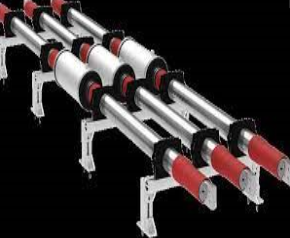What are the 2023 NEC rules for Insulated Bus Pipe (IBP) systems?
369.10 Uses Permitted for Insulated Bus Pipe (IBP) Systems
Overview
| The evolving needs of industries and large commercial sectors have traditionally required modifications to the configuration and dimensions of transmission and distribution conductors. To address this, the innovative Insulated Bus Pipe (IBP) systems have emerged as a solution. These conductors boast a multi-layered, robust design, ensuring reliable delivery of high-power, high-voltage electricity. However, standardization of their installation and utilization is imperative prior to integration into power grids. Recognizing this, Section 369.10 has been incorporated into the 2023 edition of NEC to highlight the permitted uses of IBP systems. |  |
Applying the 2023 Code
Insulated Bus Pipe (IBP) systems, also known as tubular covered conductors (TCC), represent a recent advancement in high-power electrical applications. Distinguished by their cylindrical structure, IBP systems feature a solid or hollow core surrounded by a robust insulation system. Furthermore, they are encased in an overall covering, which can be either insulating or metallic, further bolstering their durability and electrical performance. With their sophisticated design and construction, IBP systems offer a promising solution for the escalating demands of high-voltage and high-power transmission and distribution systems. Despite their potential benefits, IBP systems remain relatively unfamiliar to many electricians. To address this gap, Section 369.10 has been introduced in the 2023 NEC to outline the approved uses of IBP systems.
What’s New for the 2023 NEC?
2020 NEC
In the 2020 NEC, no reference to IBP systems was available due to their recent introduction to power grid applications.
2023 NEC
In the 2023 NEC, Section 369.10 was added to highlight the permitted uses of IBP systems. This section reads as follows (without exceptions and informational notes):
300.10 Uses Permitted.
RMC systems shall be permitted for use as power systems in accordance with the following:
(1) As exposed runs in accordance with 300.1.
(2) In wet or damp locations only when listed for such use.
(3) Installed through walls, or other types of protection lengths. Where RMC penetrates an exterior wall, the entire length that penetrates the wall shall be listed for outdoor use, and the opening in the wall shall be sealed by an approved method.
(4) Extended vertically through dry floors if fully enclosed in metal where passing through the floor and for a minimum distance of 1.8 m (6 ft) above the floor to provide protection from physical damage.
(5) For voltages up to and including 35,000 volts as nominal.
